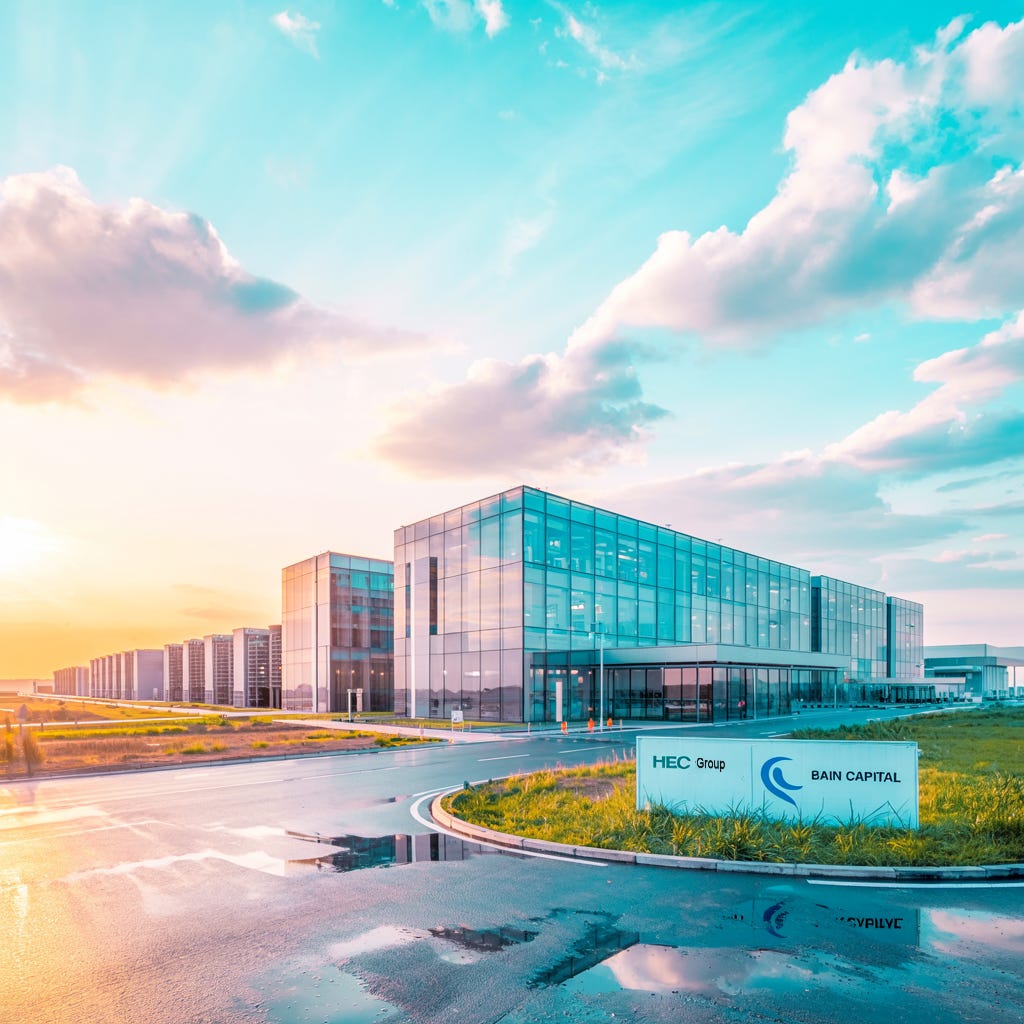Will HEC’s $4B Buy of Bain’s China Data Centers Redraw the Map for Sovereign AI and Fix the Utilization Gap?
Inside China’s biggest DC carve-out: policy alignment, thermal tech, and the utilization gap.
Welcome to Global Data Center Hub. Join investors, operators, and innovators reading to stay ahead of the latest trends in the data center sector in developed and emerging markets globally.
A Transaction That Looks Simple But Isn’t
At first glance, Bain Capital’s $4 billion sale of its China data center platform to HEC Group reads like a standard private equity exit. But peel back the layers and the story becomes less about Bain cashing out, and more about the transfer of strategic assets into domestic hands at a moment when AI workloads are rewriting the economics of power and cooling.
This isn’t just a portfolio shuffle. It’s a consolidation of industrial, policy, and technical levers under one roof, with potential to set a benchmark for how AI-era infrastructure will be owned and operated in China.
Why the Buyer Matters
HEC is not coming in as a financial sponsor chasing yield. It’s an industrial conglomerate with deep exposure to liquid-cooling materials, energy technologies, and manufacturing supply chains. The Sept. 10 agreement assigning an enterprise value of RMB 36B and injecting RMB 7.5B of fresh capital for a 46.7% stake signals that these assets are meant to be operated as part of a vertically integrated stack.
That stack is critical. As AI density accelerates, thermal performance and power efficiency become as strategic as land or interconnect rights. The deal is expected to close in early 2026, subject to regulatory approvals.
That stack is critical. As AI density accelerates, thermal performance and power efficiency are strategic levers learn why cooling is now the biggest risk in data centers
Exposure, Policy, and Utilization
The portfolio itself reflects concentrated hyperscale tenancy, historically tied to ByteDance, across Beijing, the Yangtze corridor, and the Greater Bay Area. These are not random placements they mirror the state-backed “East Data, West Compute” initiative designed to rebalance workloads regionally.
The open question: can HEC drive utilization? Reports suggest idle capacity in newer AI builds sits at ~80% in parts of China. If HEC can translate its cooling and power know-how into stickier workloads, this becomes a showcase. If not, idle racks remain a drag on capital efficiency.
Global Benchmarks and Comparables
Zoom out, and the Bain–HEC transaction rhymes with a global trend: sovereign-aligned owners consolidating sensitive digital infrastructure. The difference is in how it’s structured.
Bain is not retreating from digital infra it’s reallocating. Its SE Asia platform, Bridge Data Centres, just secured $2.8B to scale toward ~800MW. That signals a split strategy: divest China, double down on ASEAN growth.
For China, the scale is what sets this apart. Local outlets frame it as the largest DC M&A on record, creating a reference point for future deals where industrial buyers fold energy, cooling, and components directly into operations.
Key Questions for Investors
Valuation: With EBITDA near RMB 4B, the implied 7–8× multiple looks reasonable not frothy, but still contingent on execution.
Utilization: Can HEC close the gap on idle capacity, or will racks remain under-deployed?
Customer Mix: Heavy reliance on a single tenant raises concentration risk. Diversification will be critical.
Policy Tailwinds: Will “East Data, West Compute” translate into dated energization milestones lenders can underwrite, or stay stuck in the slogan stage?
Implications for Boards, Sovereigns, and Institutions
Boards of operators should be thinking differently about cooling and power not as line items, but as intellectual property central to competitiveness. Compensation and KPIs tied to utilization, not just bookings, will matter more in an AI-driven world.
Sovereigns and policymakers face a parallel challenge: promises of renewable allocation and interconnect upgrades only carry weight if they are bankable. Without dated milestones, spreads will remain wide.
For institutional investors, the monitoring points are clear: logo concentration, liquid-cooling deployment speed, and utilization curves. Trend the right way, and multiples can re-rate. Trend the wrong way, and spreads stay flat or widen against hyperscaler comparables.
For institutional investors, the monitoring points are clear: logo concentration, liquid-cooling deployment speed, and utilization curves key factors influenced by political risk in data center investing
The Bigger Picture
This deal is not about ownership for its own sake. It’s about whether vertically integrated, domestically aligned players can convert capital and policy alignment into real, energized megawatts.
If HEC proves out the model through cooling leadership, power integration, and diversified demand it will validate both the price and the strategy. If not, China risks reinforcing the “idle capacity” narrative, along with a higher cost of capital for the sector.

